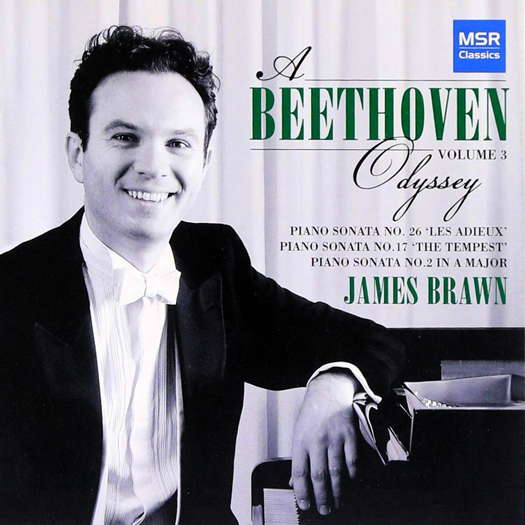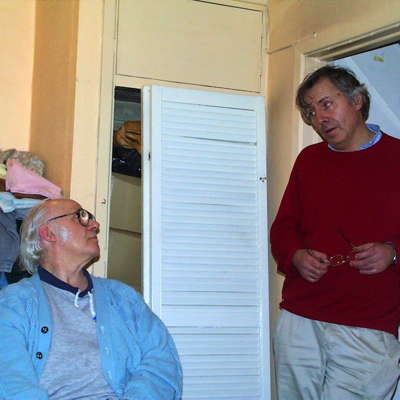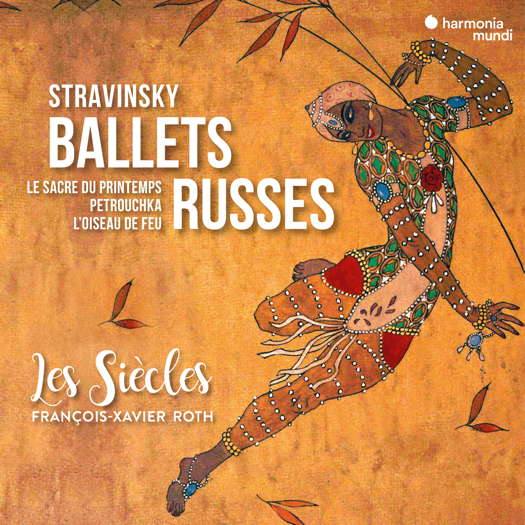 SPONSORED: CD Spotlight. Masterful Handling - Volume 3 of James Brawn's Beethoven, praised by Andrew Schartmann.
SPONSORED: CD Spotlight. Masterful Handling - Volume 3 of James Brawn's Beethoven, praised by Andrew Schartmann.
All sponsored features >>
 DISCUSSION: John Dante Prevedini leads a discussion about Composers, individuals or collective?, including contributions from David Arditti, Halida Dinova, Robert McCarney and Jane Stanley.
DISCUSSION: John Dante Prevedini leads a discussion about Composers, individuals or collective?, including contributions from David Arditti, Halida Dinova, Robert McCarney and Jane Stanley.
 25 YEARS: Classical Music Daily celebrates twenty-five years of daily publication with an hour-long video featuring some of our regular contributors.
25 YEARS: Classical Music Daily celebrates twenty-five years of daily publication with an hour-long video featuring some of our regular contributors.

Stravinsky's Breakthrough
GERALD FENECH listens to Diaghilev's commissions
'... absolutely enthralling, revelatory and consistently vibrant.'
The title of this issue will certainly ring a bell for many ballet lovers and scores of others who just love enjoying a knock-out melody. But I doubt whether there is enough interest for one to delve deeply into the history of what was really 'Les Ballets Russes'. Originally conceived by impresario Sergei Diaghilev, the company is widely regarded as the most influential ballet company of the twentieth century, in part because it promoted ground-breaking artistic collaborations among young choreographers, composers, designers and dancers, all at the zenith of their respective fields. Diaghilev commissioned works from composers such as Stravinsky, Debussy, Prokofiev, Satie and Ravel, artists such as Kandinsky, Benois, Picasso and Matisse and costume designers Baskt and Coco Chanel.
The company's productions not only created a huge sensation but also introduced European and American audiences to tales, music and design motifs drawn from Russian folklore. Indeed, the influence of Les Ballets Russes lasts to the present day. Frustrated by the extreme conservatism of the Russian art world, Diaghilev organized the groundbreaking Exhibition of Russian Art at the Petit Palais in Paris in 1906 and the event took Paris by storm, creating a fascination with all things Russian. In 1907 the impresario organized a season of Russian music at the Paris Opera and two years later he set in motion the first Paris 'Saison Russes', devoted exclusively to ballet. This initiative gave birth to Les Ballets Russes as we know it. When Diaghilev died of diabetes in Venice on 19 August 1929 the company was left with great debts. As the Great Depression began, its property was claimed by its creditors and the company of dancers dispersed.
There is much more to the history of Diaghilev's creation, but I hope that this very protracted information will suffice for one's enjoyment of the works on this two CD album.
At the height of its popularity, Les Ballets Russes attracted a host of composers who felt compelled to write ballet music with the hope of either enhancing their fledgling career or consolidating that which had already been achieved. Some have been forgotten while others have fared much better and are still with us, but for a certain Igor Stravinsky, fate reserved a unique relationship with Diaghilev's troupe. When the impresario hired the young Russian composer, Stravinsky was virtually unknown, but when The Firebird was premiered on 25 June 1910, the music pulverized audiences and critics alike.
Listen — Stravinsky: Disparition du palais (L'Oiseau de feu)
(CD2 track 31, 1:15-2:11) ℗ 2011-14 harmonia mundi musique sas :
From then on Stravinsky and the company became one and the same thing. Up to this day nothing has changed, indeed Stravinsky and Diaghilev's Les Ballets Russes are still cemented together, not only artistically but also historically. The Firebird was considered as an astonishingly accomplished work for one so young but it was Stravinsky's breakthrough.
In 1911 Petroushka appeared on the scene, but contemporary audiences found it to be almost unbearably dissonant and confused. Today, 110 years after its premiere on 13 June 1911, this ballet has established itself as one of the most popular in the repertoire.
Listen — Stravinsky: Danse russe (Petrouchka)
(CD1 track 16, 0:00-0:45) ℗ 2011-14 harmonia mundi musique sas :
The Rite of Spring, premiered on 29 May 1913, caused complete bedlam. People were stunned and the music world was indeed turned upside down. The ballet's willful rhythms and aggressive dynamics were, for many, unacceptable, but as time rolled by, The Rite of Spring was accepted as a true masterpiece that changed the history of ballet music.
Listen — Stravinsky: Danse sacrale (Le Sacre du printemps)
(CD1 track 13, 0:00-0:51) ℗ 2011-14 harmonia mundi musique sas :
François-Xavier Roth groups together all three scores, and his conducting is absolutely enthralling, revelatory and consistently vibrant. Other important factors should also be brought to one's attention. The performances use the versions as heard at the premieres. Also Roth utilizes early twentieth century period instruments, giving us the opportunity to pick up details which we might have missed in more recent recordings. This is brilliant, exhilarating stuff that keeps you on the edge of your seat.
You can also enjoy a welcome bonus: Les Orientales, a Divertissement based on music by Glazunov, Sinding, Arensky and Grieg.
Listen — Christian Sinding, orchestrated by Charlie Piper: Danse orientale, Op 33 No 5
(CD2 track 4, 2:12-3:09) ℗ 2011-14 harmonia mundi musique sas :
This is a humdinger of a set in superb sound quality that is a must for all those who love great music-making.
Copyright © 4 July 2021
Gerald Fenech,
Gzira, Malta

CD INFORMATION: STRAVINSKY - BALLETS RUSSES


